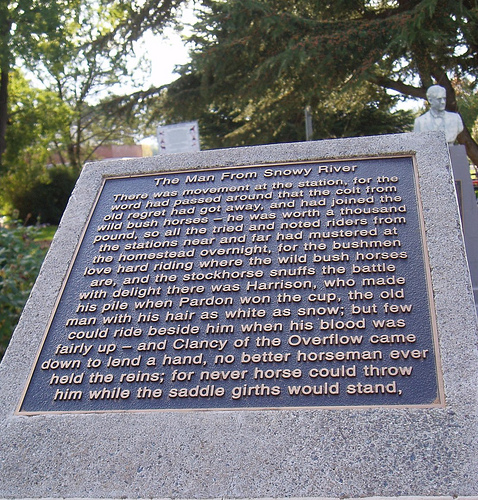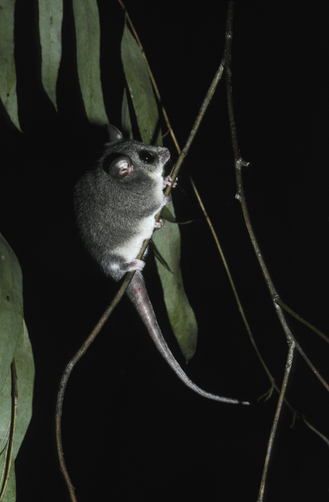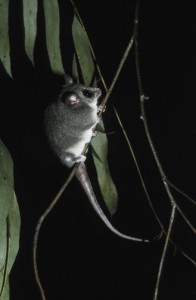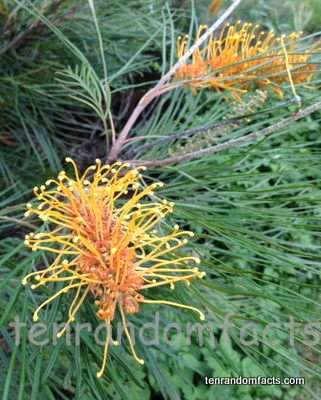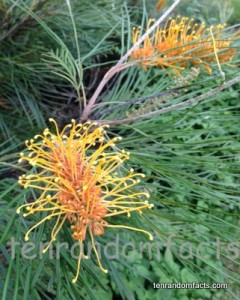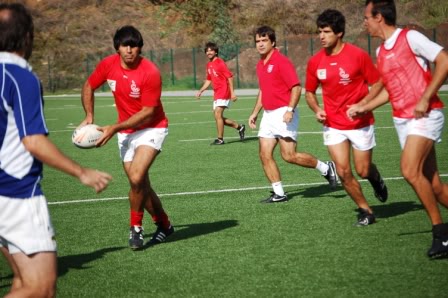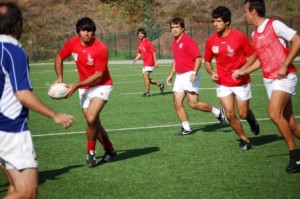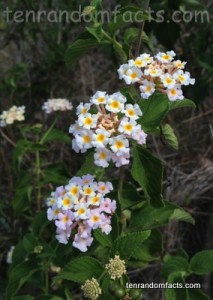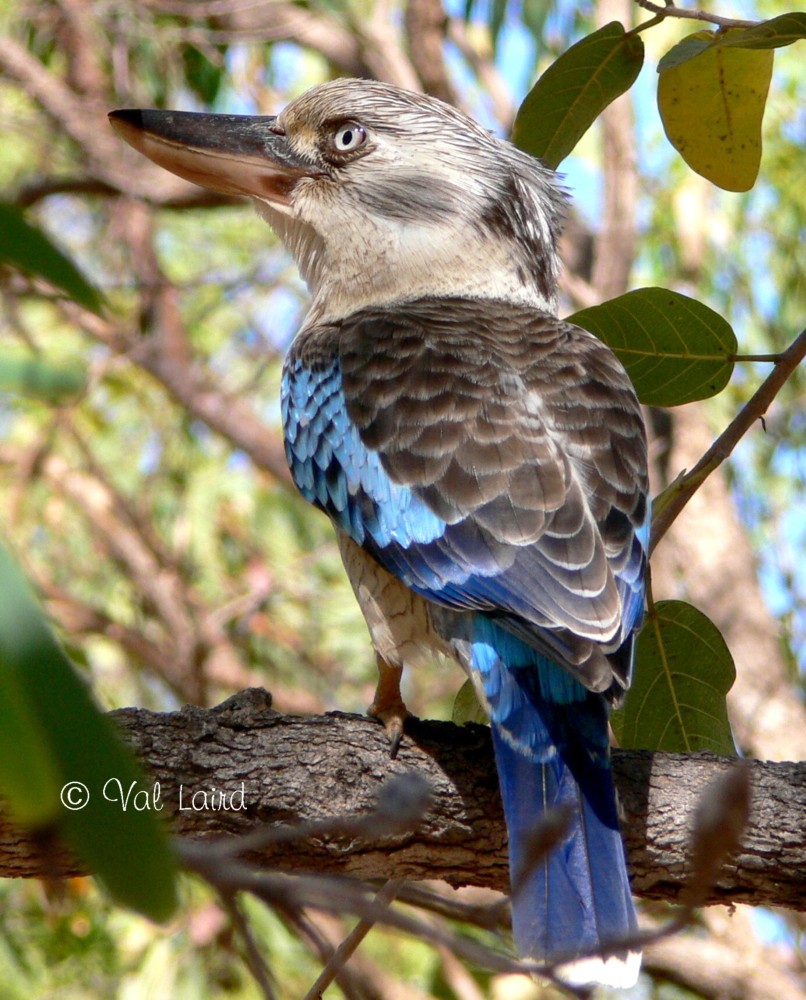
Laugh, laugh, laugh like most kookaburras. Well this one doesn’t.
- Blue-winged Kookaburras are large kingfishers with long beaks. The males have blue tails, while the females have red-brown tails.
- Blue-winged Kookaburras are also known as Barking Jackass, Howling Jackass and Leach’s Kookaburra.
- Blue-winged Kookaburras were first recorded by Sir Joseph Banks in 1770, who thought the kookaburra was a Laughing Kookaburra. Nicholas Vigors and Thomas Horsfield corrected the mistake in 1826.
- Blue-winged Kookaburras are found in the southern parts of New Guinea and the wetter parts of northern Australia.
- Blue-winged Kookaburras eat small animals that live on the ground; like reptiles, insects and mammals
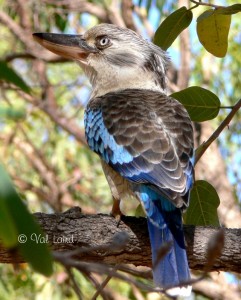 Photo courtesy of Val Laird
Photo courtesy of Val Laird
- Blue-winged Kookaburras live in trees and nest in tree holes.
- Blue-winged Kookaburras lay 3-5 eggs that are white and a little shiny.
- Sometimes, in the first week of being born, Blue-winged Kookaburra babies sometimes aggressively kill their youngest sibling.
- Adult Blue-winged Kookaburras fly quite slow.
- Blue-winged Kookaburras cackle, trill, bark and screech.



